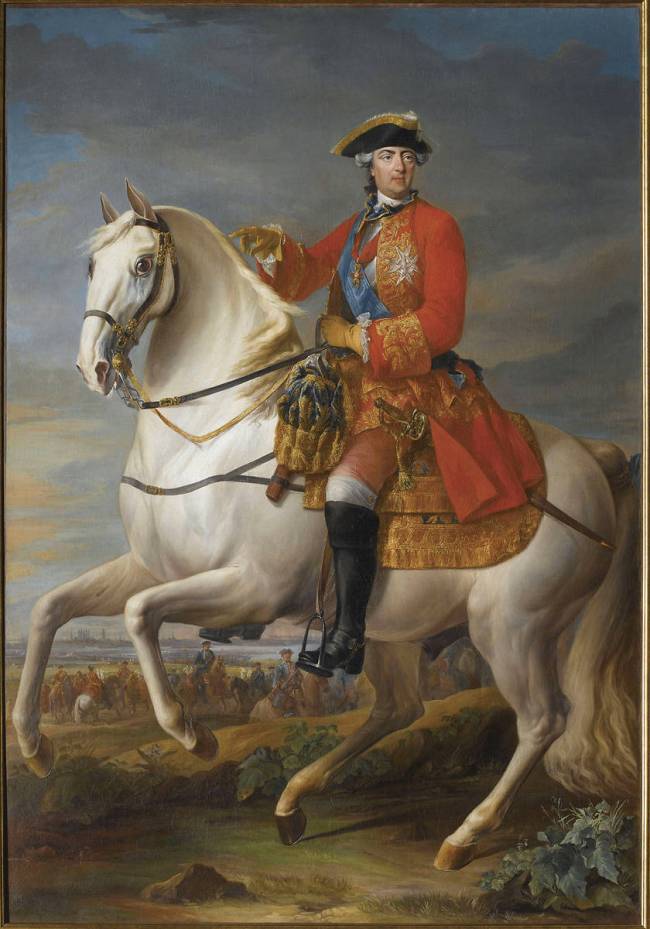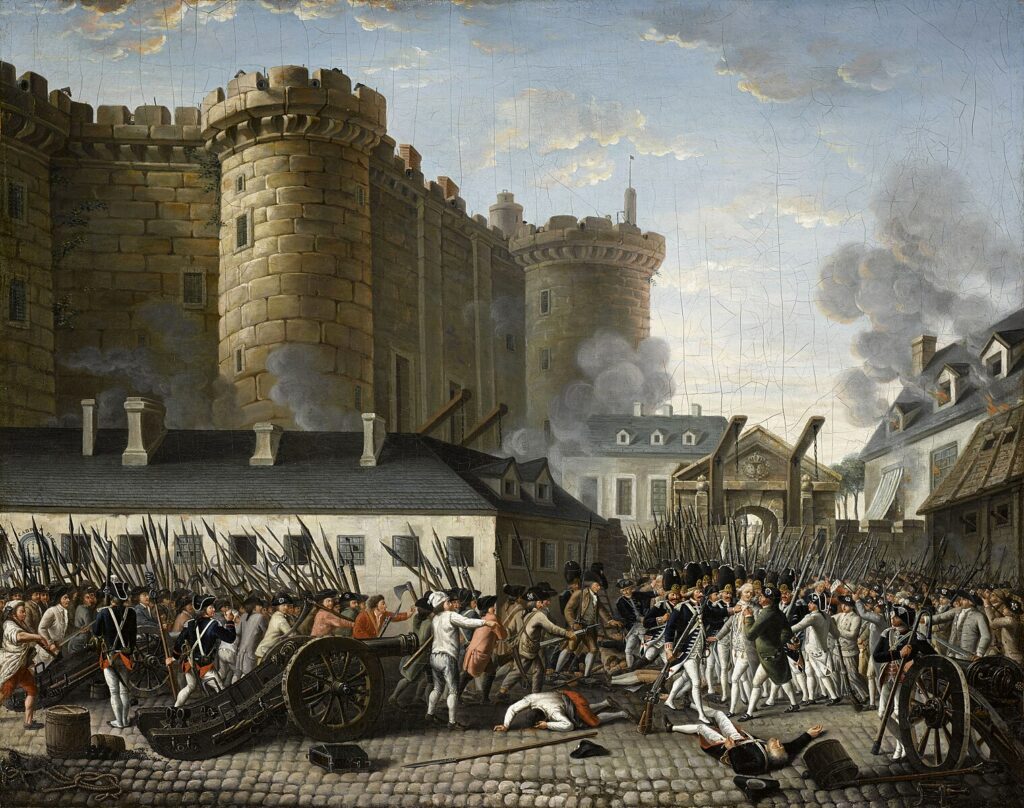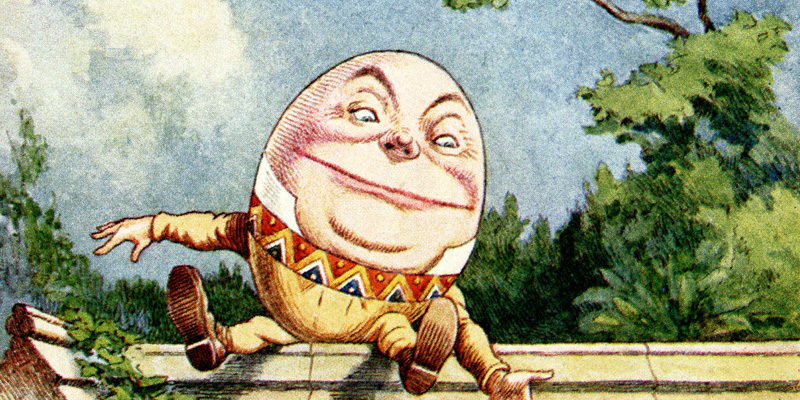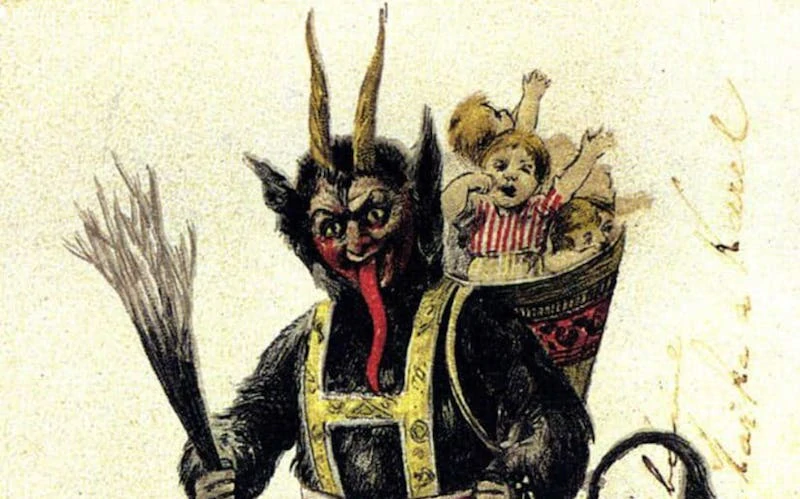In the long and storied history of France, the year 1789 is a demarcation line between the Old Order and what we now know as the modern country. It was a year marked by widespread hunger, protests, violence, and change.
It was a year in which centuries-old concepts of social and political institutions were destroyed by ideas: Liberty, Equality, and Fraternity. It was the year of the French Revolution.
But what led the French to throw away centuries of history and tradition? What made them pursue a new path that led to a more democratic society?
Let’s explore the causes that stirred the French Revolution and the birth pains it created that created Modern France.
The Ancient Regime
For centuries, France followed the ancien régime or “old order.” Within this system, French citizens were the subject of the King and a member of the three estates: the clergy, the nobility, and the Third Estate. This covered everyone from peasants to the bourgeoisie.
No French nationality existed. But many villages, guilds, and parishes were united under one conglomerate. These villages and communities sometimes had representation in court, but some didn’t.
The old order was still largely based on the medieval feudal system. The estates were divided in such a way that gave the highest authority to the Roman Catholic Church and the clerics. They were called the “First Estate,” and they were not required to pay taxes.
The next level of authority was the nobility. They were the most prominent landholders after the Church. Many still held feudal lands in 18th-century France. They were also more educated and considered superior to ordinary folk. The aristocracy was called the “Second Estate,” and most did not pay taxes, either.
Though many did not hold any kind of office as they did in medieval times, they still had a hold over ordinary people. They were able to collect a lot of money from their property holdings by leasing it to farmers and the working class.
The final group was the ordinary peasants, farmers, merchants, and bourgeoisie in the cities and towns. Some of the French middle class who earned a lot of money from trade could afford some form of social mobility. Their money enabled them to buy positions as administrators and officers in the Army. This paved the way for the ordinary person to become a part of the nobility, but this was rare.
Most people who belonged to the “Third Estate,” and comprised 98% of the population of France at that time, could not move out of their financial and social circumstances. They were born poor, and most stayed poor and depended on very limited resources to survive.

The First Cause of the Revolution: The Third Estate
The Third Estate was the only social class required to pay taxes to the state. Though there had been previous motions to collect taxation from the nobility, it was always struck down by the nobles as they were the ones in authority.
When the King called a convocation of the Estates General to discuss raising taxes, everyone opposed it, especially the Third Estate. The people of France had long been under economic strain, and increasing taxes was unwelcome in an already suffering population.
A Declining Royal House
Up to the 18th century, France was one of the wealthiest countries in Europe. The time of Louis XIV was one of the most prosperous periods. His extravagant court and many construction projects including Versailles and several military forts were built by architect Sébastien Le Prestre de Vauban.
When Louis XV ascended to the throne in 1715, France and the Royal House of Bourbon were still considered a major European power. The country was embroiled in the Seven Years’ War and another war with Britain.
The King also continued the tradition of patronizing arts and architecture. He commissioned many buildings and public spaces to be built in Paris. This included the Pantheon, the Place de la Concorde, and the Ecole Militaire.
Much like his grandfather, Louis XV continued to enjoy the excesses of the royal court. He had several mistresses, conducted lavish parties and gatherings in Versailles, and continued supporting construction projects that took a heavy toll on the French economy.
By the time Louis XVI ascended the throne in 1774, France was deeply in debt. This was due to the wars it fought against Britain, as well as the continued expenses of the court.
Additionally, France decided to support the American Revolution. The King’s ministers took on massive international loans to support the American colonies. All of these put a strain on the common citizens, who carried most of the burden of taxation.
The Royal Family was also perceived as worse than their predecessors. Though by all accounts, Louis XVI was considered an honorable and decent King, his wife, Marie Antoinette, was seen in a bad light. She was an Austrian princess, and many thought she was dipping into French politics to benefit Austria.
Furthermore, as the royal family expanded, Marie Antoinette asked for more properties to support her children— at the state’s expense. She had such a reputation for being financially reckless that she was called “Madame Deficit” by 1787.
The Second Cause of the Revolution: French Absolutism
The absolute power of King Louis XVI over the country caused resentment in many of the French. The authority of the King was questioned, especially since the economic and social strains experienced by the majority were unsustainable.
The Third Cause of the Revolution: the Involvement with the American Revolution
Deciding to support the colonists in North America was seen as an opportunity to deplete and distract British resources. However, France was in no position to support any revolution.
The French provided armaments, supplies, troops, and naval support during the American Revolution. This endeavor exhausted the country’s resources, but it also inspired many of the French to see how a revolution could change a country for the better.
Many scholars believe that the victory of the Americans over Britain in 1791 was a catalyst for the French to create a new society that did not rely on royal absolutism.
Mother Nature Strikes
In the 1700s, France was still primarily an agricultural society. Most citizens were farmers, and the country relied on local production to feed most of its people.
The year 1788 was not a good season for French farmers. A drought struck the country and affected the grain harvests. This resulted in heavy losses and led to a famine for most of the year.
In July 1788, a severe hailstorm damaged the remaining crops that survived the drought. Unfortunately, this was not the last of the land’s misfortunes.
The winter of 1788 was the harshest and coldest in memory. It added further hardships for the farmers and made surviving in France all the more difficult.
As 1789 began, the treasury was empty, the country was in debt and embroiled in several conflicts, and many peasants and the middle class were experiencing horrible drought and hunger.
Many of the French looked at the luxuries that the Royal family maintained because of the heavy taxation the country imposed on them. This was the perfect moment to stir up a revolution.
The Fourth Cause of the Revolution: Drought and Famine
The natural disasters that destroyed crops and grains in 1788 affected food supplies for the following year. The result was food shortages in many areas. The winter season was also very harsh, and many went to Paris to beg.
Because resources were scarce, many stores in Paris raised the price of bread. This resulted in riots throughout the city. The news that there would be additional taxes brought no comfort either, and many people in the countryside went to Paris to protest and demand the King take action.
Changing Social Norms
The late 17th and 18th centuries saw the rise of the Enlightenment in England and France. The movement focused on using reason to question authority, social norms, and culture to improve the human condition.
This made many people question their lot in life and explore ideas such as liberty, equality, and social justice. It also put into question the moral authority of the Church and the aristocracy.
In France, thinkers like Jean Jacques Rousseau, Denis Diderot, Montesquieu, Voltaire, and Condorcet questioned the existing societal structures. They created outlines of what an enlightened person and country should aspire to.
The Fifth Cause of the Revolution: The Enlightenment
The Age of Enlightenment pushed reason and logic as the best ways to understand and create a new society. It made people challenge tradition, religion, and superstition to create a world where everyone was equal and free.
These ideas further pushed the Third Estate to challenge the status quo in France and demanded changes that would lead to the French Revolution.
The Revolution Begins
In 1789, the King called for a meeting of the Estates General, so the three estates could meet and agree to reform the country’s economy. On May 5 in Versailles, 1300 delegates met and argued over a fundamental issue: should they vote by head or by estate?
A vote by head would give the advantage to the Third Estate. In contrast, voting by estate gave a continued advantage to the ruling classes. The debate raged for days.
On June 17th, delegates of the Third Estate declared they were The National Constituent Assembly and would proceed without the support of the two estates. The clergy declared their support for them.
Once the royal guards realized what was happening, they locked the delegates out of the meeting hall on June 20th. However, the delegates occupied the King’s tennis court and would not leave until they created a new constitution for France.
The King eventually seemed to give in to the revolting delegates. He urged the nobles and clerics to join them in creating a new constitution. But he was actually planning to dissolve the assembly.
The People Take the Bastille

By July 1789, the people of Paris heard news that caused a stir: the King and the nobles were planning a conspiracy to remove the Third Estate.
On July 14th, a Parisian mob stormed the Bastille, symbolizing the King’s tyranny. The mob took control of the castle, and once again, the King had to acquiesce to the people’s demands.
In the provinces, peasants began to overthrow their lords and masters. The National Constituent Assembly then decreed the removal of tithes and the abolition of feudal regimes.
In August, the Assembly introduced the Declaration of the Rights of Man and of the Citizen. It heralded liberty, equality, and the right to resist oppression.
The Assembly Takes the King to Paris
This declaration was so revolutionary that the King refused to sign them. But the people were now in power.
On October 5, they marched into Versailles and demanded the King go to Paris and continue the creation of a new constitution. King Louis XVI had no choice but to do so with the Royal family and the court.
The French Revolution Creates a New France
For the next few years, the Revolution and the National Assembly abolished much of the “old order.” This gave half of the population the right of suffrage and nationalized all the lands owned by the Church.
But as the Assembly made sweeping reforms, internal disputes among the revolutionaries arose, and many took advantage. France became embroiled in a series of wars and counter-revolutions that sought to fill the power vacuum left by the King and the aristocracy.
People like Maximilien Robespierre sought to gain power through the Reign of Terror but soon found themselves under the guillotine. King Louis XVI and his wife were executed in 1793 for treason.
But soon, the wars and counter-revolutions would end. This cleared the way for new leaders to rise from the remains and carnage of the French Revolution: Napoleon Bonaparte, who would take France to a new era of power and empire.

